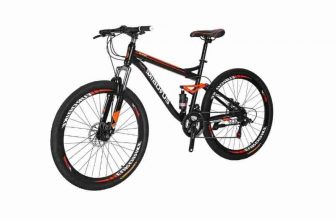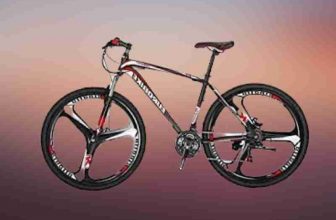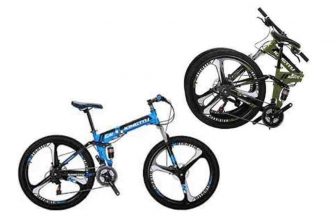
What if I told you how many calories are burned while cycling? How fast you’re going, the type of bike you’re on, and the amount of resistance you’re facing all play a role in the answer.
Bike rides can be challenging to measure in terms of the calories burned. A 180-lb. cyclist can expect to burn about 650 calories per hour regularly at a moderate effort level. This is an approximation, but the precise number depends on various factors, some of which are difficult to measure. The table shows how many calories you burn when cycling, running, or swimming for an hour at various intensities.
How biking uses calories?
When you exercise, your muscles begin converting fats, sugars, and proteins into adenosine triphosphate, or ATP, using the oxygen you inhale. A cell’s primary source of energy is this molecule.
Even if you’re hanging out, you’ll need a steady ATP supply. According to triathlete coach Rachel DeBusk, CPT, of Seattle’s Unstill Life, you need a lot when it comes to working out.
Your body may make or uses ATP differently depending on the length and intensity of your workout. DeBusk says, “There’s some ATP waiting in your muscles.” But you have to make more when that’s used up.
Your body uses anaerobic metabolism to convert carbohydrates into ATP during short, intense bursts of exercise. During long, less intense workouts, you get most of your energy from carbohydrates. Aerobic metabolism is your primary source of ATP during these workouts.
How Many Calories Does Road Biking Burn?
The lower body and muscle endurance can be improved by riding a bike. You will burn 400–500 calories an hour, which is remarkable.
Everyone knows that biking is better for your cardiovascular health than running or jogging. When it comes to endurance, biking outperforms running by a wide margin. The quadriceps muscle, along with the three parts of the glutes and calf muscles, is strengthened by cycling.
Professional marathon cyclists have relied on road bikes for more than half a century. In contrast to mountain bikes, road bikes are more straightforward machines with fewer moving parts.
There are many advantages to riding a road bike for long, intense training sessions. Unlike mountain bikes, you don’t need to take them up the mountains to ride them. Road bikes allow you to go farther and faster with less effort. You’ll have a better chance of burning more calories if you do this.
There is no end to the number of flat roads that road bikes can use, making them an ideal mode of transportation for working out. Most urban dwellers purchase a standard road bike for commuting around town. Additionally, road bikes are significantly less expensive than mountain bikes.
Now, I’m not saying that road bikes aren’t expensive. Even though high-quality materials on a road bike can be expensive, road bikes tend to be less expensive than mountain bikes.
As a result, if I were in your shoes, I’d go with a road bike. If I lived near a mountain, that wouldn’t be the case.
How Many Calories Do You Burn While Mountain Biking?
Mountain biking burns how many calories?
While mountain biking, between 200 and 1400 calories can be expended per hour. Moderate cross-country singletrack riding burns approximately 680 calories per hour.
A bike ride’s exact calorie burn depends on a variety of factors:
- The rider’s weight
- Gender
- Rolling resistance
- Surface terrain
- Tread pattern
- Intensity
- Wind
- Aerodynamic drag
- Gradients
- Bike mass
- Tire pressure
- Clipless pedals
- Biking posture
- Tire diameter
- Wheel width
- Suspension
- Altitude
Adjusting for all these factors is nearly impossible, but we break down as many variables as we can in this article.
Do you burn more calories while mountain biking or road biking?
Mountain biking is more energy-intensive than road biking because of the knobbier tires (which have a larger contact surface with the road) and the difficulty of the terrain. Sixty minutes of mountain biking burns an additional 60 to 100 calories compared to 60 minutes of road biking.
Many people focus on maintaining a high speed for as long as possible on a road bike because of the best power-to-speed ratio. As a result, the tires are made of tin, and the other components are as light as possible.
Due to the rugged nature of mountain bikes, they’ve been outfitted with the most durable components and knobby tires. A mountain bike’s weight is vastly different from a road bike’s. For all of the above reasons, riding a mountain bike uses more energy than riding a road bike.
Because of their bikes’ lightweight and high pedaling efficiency, road cyclists frequently cover greater distances than mountain cyclists. To lose weight, mountain biking is preferable to road biking because it is less time-consuming and can burn up to 100 more calories per hour than road biking.
The following article might interest those interested in riding a mountain bike on the road: Everything You Need to Know Before Riding a Mountain Bike on the Road.
Are mountain bikes any good for burning calories?
After discussing road bikes, it’s time to move on to mountain bikes. Using a mountain bike allows you to work your heart and your muscles simultaneously. On the other hand, mountain biking burns a lot more calories than riding a road bike.
Mountain bikes are built for rough terrains, such as the mountains. Mountain bikes are an excellent transportation model and an excellent form of exercise.
The fact that mountain bikes burn so many calories is no accident. Rather than blaming the bike, it’s time to blame the road. You’ll have to put in extra effort because you’re riding a mountain bike on a mountain.
You’re not just hauling around the bike’s weight; you’re also carrying around your own. On top of that, the path was uneven and bumpy.
The more difficult it is for a rider to traverse a rough surface, the more difficult it is for the rider.
Road trips on mountain bikes are also possible. Mountain bikes can also be used on roads, which allows you to get in some calorie-burning severe action.
However, if all you want to do is burn calories, what’s the point of investing in a mountain bike? What’s the point of spending so much money on something so pricey? To begin with, why are we even confronting this problem? Purchase a spinning bike.
Let’s be honest here. With a mountain bike, it’s not fun to climb a mountain for exercise. Planning and preparation are necessary for things like that.
Only ride your bike up a mountain if you want to do so. Do not buy a mountain bike to lose weight and gain muscle.
Why and How Should You Use Mountain Biking to Burn Calories?
Mountain biking is a great way to burn calories, and it does so at a significantly higher rate than walking. Mountain biking may not burn as many calories as running, but you will cover more ground and thus see more scenery than you would if you were to burn calories by running. This is true even if you are not competing in a race.
The fact that you have to purchase a mountain bike to participate in mountain biking makes it superior to running in this regard. Even though it will be more expensive than running as a hobby, you will feel compelled to go biking at least once a week due to the financial commitment to get the most bang for your buck.
Mountain biking is relatively risk-free if you stay on the cross-country trails and avoid any technical features or jumps on your bike. Mountain biking may have its share of accidents, but it is relatively easy on the joints compared to other activities that burn the same number of calories. Of course, accidents do happen.
Taking it slow is critical if you’re new to mountain biking or even if you are experienced but have only done a few short outings. Don’t expect to ride your bike for four straight hours on the first day! Instead, begin by taking a short trail to see how far you can go before becoming too exhausted.
Ride that short trail a few times before moving on to a longer trail to get used to it physically and mentally. You must ride long enough to wear yourself out but not so long that you can barely make it back to your car.
You will have a long recovery time if you over-exhaust yourself, but it is also highly harmful to your health. The more you practice mountain biking, the more you will be able to ride for more extended periods over more challenging and hilly terrain.
One of the best ways to maximize your mountain biking experience is to avoid coasting. Even though it’s only natural to take it easy once you’ve found your stride, coasting doesn’t contribute to your overall calorie burn goal. Keep pedaling even when you don’t need to, and race yourself if you must, as long as you keep up your pedaling in the accessible areas.
Another way to burn the most calories while mountain biking is to go for a ride first thing in the morning before you eat anything. When you cycle on an empty stomach, there is a learning curve to get used to. It will make your body burn any calories from the day before.
A routine can be established by both the mind and the muscles. Therefore, it’s a good idea to change your route frequently so that your muscles can’t build up muscle memory of the trail. Once your muscles get used to the trail, they don’t have to work as hard to keep up with your usual pattern, which means you don’t get as many calories burned as you would otherwise.
More About Calories And How Much You Should Be Burning
It’s important to remember that a calorie is simply a unit of energy that your body consumes or stores up for future use. The calories you consume throughout the day come from almost everything you eat and drink. The calories you expend during the day come from moving around, working, or playing, and even while you sleep, your heart and lungs use up some calories in breathing and beating.
The number of calories your body receives from various foods varies. The calories your body expends while engaging in various activities, the more strenuous the activity, the more calories your body expends.
If you eat the same number of calories as you burn off, you will remain the same weight as you are now. You will gain weight if you consume more calories than you expend because your body will store them. On the other hand, if you burn more calories than you consume, you will officially lose weight.
Around 3,500 calories are required to gain one pound of fat. To lose one pound, you must burn off at least 3,500 calories more than you consume. To avoid gaining the weight back and keep it off, you must continue to burn at least as many calories as you consume.
Unfortunately, this is why most people give up on calorie counting after only a few months due to boredom and discouragement. To maintain your weight loss, you can’t simply stop counting calories after a few weeks or months and expect to maintain your current level of health.
Each of the many calorie-counting apps has a unique way of determining how many calories you’ve burned. However, they are just estimates. Using some basic math, you may get a better idea of how many calories you are burning by doing it yourself.
If you’re trying to figure out how much fat you still have to lose, keep in mind how much muscle you’ve gained in the interim. People who are trying to lose weight may not always think about this. You’re getting a lot of exercises to burn calories, but you’re also gaining muscle.
Simply because you aren’t noticing a decrease in your weight when you step on the scale in your bathroom doesn’t mean you aren’t losing fat and gaining it back in muscle.
Having other goals in mind besides achieving your ideal weight is essential. Additionally, one can aim for a specific waist size or something similar in inches rather than pounds. The circumference of your body is not affected by muscle mass as much as it is by fat mass.






